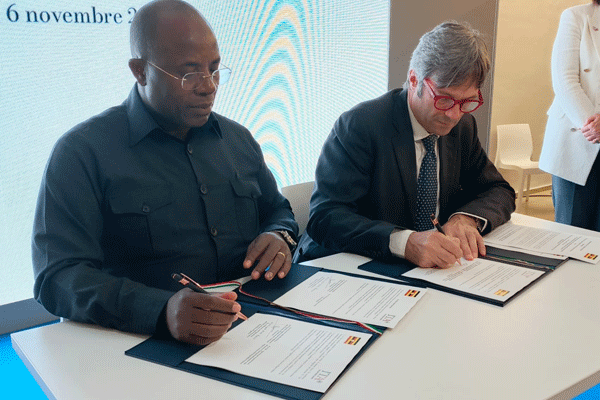Know your automatic gear shift letters

Each letter has a separate setting. PHOTO/RACHEL MABALA
What you need to know:
Each letter or number listed on the transmission gear shift represents a unique setting or task for the transmission. Here is what each letter or number means.
Virtually all passenger cars nowadays are automatics. Naturally, cars with automatic transmissions are less complex to drive when compared to their manual counterparts. Surprisingly in Europe autos are less popular where many drivers prefer manual transmissions.
In Uganda, most cars are used vehicle from Japan where automatic transmissions are quite popular. It’s relatively uncommon to find a car, particularly a Japanese domestic market car, with manual transmission. Most cars logically have the usual setup of P R N D 2 and L. Of course you may come across different setups but we shall stick to that as the standard.
P for parking.
This one is pretty self-explanatory. Simply use it when the car is parked. It basically restricts the car from moving in either direction. A parking pawl (think metal pin) prevents the transmission from rotating, and therefore the car from moving, although the car’s non-driven road wheels may still rotate freely. For this reason, it is recommended to use the hand brake (or parking brake) because this actually locks (in most cases) the rear wheels and prevents them from moving.
Sometimes, people use the parking as the parking brake, which reduces the life of the transmission and the park pin mechanism because parking on an incline, for instance will cause undue stress on the parking pin
Additionally, a car should be allowed to come to a complete stop before setting the transmission into park to prevent damage. Usually, Park (P) is one of only two selections in which the car’s engine can be started, the other being Neutral (N). In many modern cars and trucks, the driver must have the foot brake applied before the transmission can be taken out of park.
R for reverse
This simply gives the car the ability to move backwards. Similar to engaging P, the car must come to a complete stop for one to engage R. Many modern automatic transmissions have a safety mechanism in place, which, to some extent, prevents (but does not completely avoid) accidentally putting the car in reverse when it is moving forward.
N for Neutral
Neutral which is N really disengages the transmission from the wheels. So the car is able to move freely under its own weight. Neutral and Park are the only selections where the engine can be started. D is for Drive, and plainly put, makes the car go forward.
2 and L
Then comes the less commonly used selection of 2, which stands for second, and L that stands for low. 2 basically limits the transmission to the first two gears or in some models, locks the transmission in the second gear. This can be used to drive in adverse conditions such as slippery and muddy roads. The L selection basically locks the transmission in the first gear. This selection like 2 is useful in muddy conditions.
However, you have to be careful with its use. Since the engine is restricted to the first gear, the tyres might slip under the increased torque. Nonetheless, it is quite efficient if you have heavy loads and are going uphill.
Overdrive
Then there is that O/D button which stands for overdrive. Generally speaking, overdrive is the highest gear in the transmission. On most cars, the automatic transmission has three speeds and overdrive as the fourth. Overdrive allows the engine to have less rpm with higher speed in order to have better fuel efficiency.
When you switch it on, you allow the transmission to shift into overdrive mode after a certain speed is reached. When it is off, you effectively limit transmission to the third gear. In normal driving conditions, the overdrive should always be on. You may need to switch it off when driving in hilly areas or when there is need to downshift the gear for sudden acceleration and increased power at high speeds.
For most of the cars the O/D Off light shows when overdrive is disengaged. This means your car shall down shift to gear three or if already in gear three, shall not shift to gear four, which is the overdrive gear. With newer cars, you might find different configurations with some having options for manual shifting. Nevertheless, they all have most, if not all of the above.
Note
If your automatic transmission has a series of numbers after the “D” those are manual gear settings for the forward gear operation, with 1 being the lowest gear and larger numbers representing higher gears. They can be used if your regular D gear is not working, and when going up and down steep hills to provide more engine braking.
D1: Increases torque for difficult terrains such as mud or sand.
D2: Aids the car in uphill climbing, or provides a quick engine boost.
D3: Sometimes shown as an OD (overdrive) button instead, D3 revs the engine for efficient overtaking. The overdrive gear ratio causes the tyres to move faster than the engine spins.




